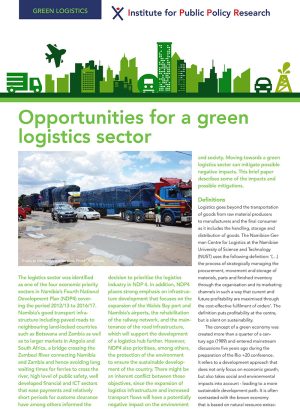The logistics sector was identified as one of the four economic priority sectors in Namibia’s Fourth National Development Plan (NDP4) covering the period 2012/13 to 2016/17. Namibia’s good transport infrastructure including paved roads to neighbouring land-locked countries such as Botswana and Zambia as well as to larger markets in Angola and South Africa, a bridge crossing the Zambezi River connecting Namibia and Zambia and hence avoiding long waiting times for ferries to cross the river, high level of public safety, well developed financial and ICT sectors that ease payments and relatively short periods for customs clearance have among others informed the decision to prioritise the logistics industry in NDP 4. In addition, NDP4 places strong emphasis on infrastructure development that focuses on the expansion of the Walvis Bay port and Namibia’s airports, the rehabilitation of the railway network, and the maintenance of the road infrastructure, which will support the development of a logistics hub further. However, NDP4 also prioritises, among others, the protection of the environment to ensure the sustainable development of the country. There might be an inherent conflict between these objectives, since the expansion of logistics infrastructure and increased transport flows will have a potentially negative impact on the environment and society. Moving towards a green logistics sector can mitigate possible negative impacts. This brief paper describes some of the impacts and possible mitigations.

